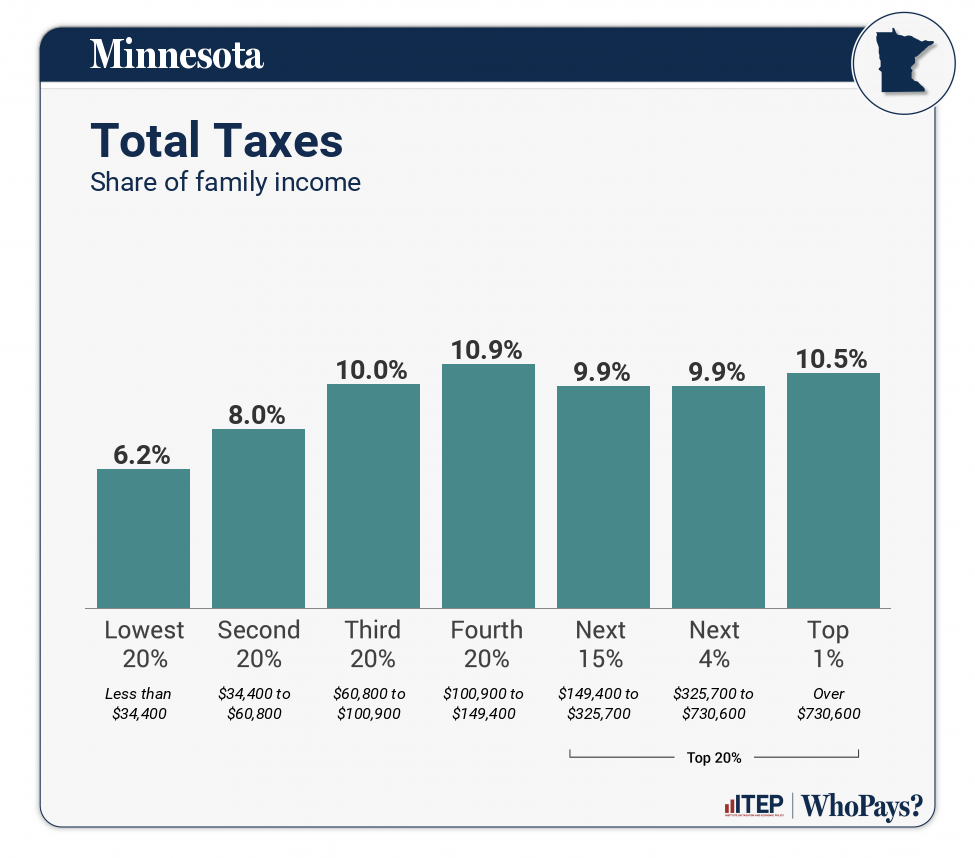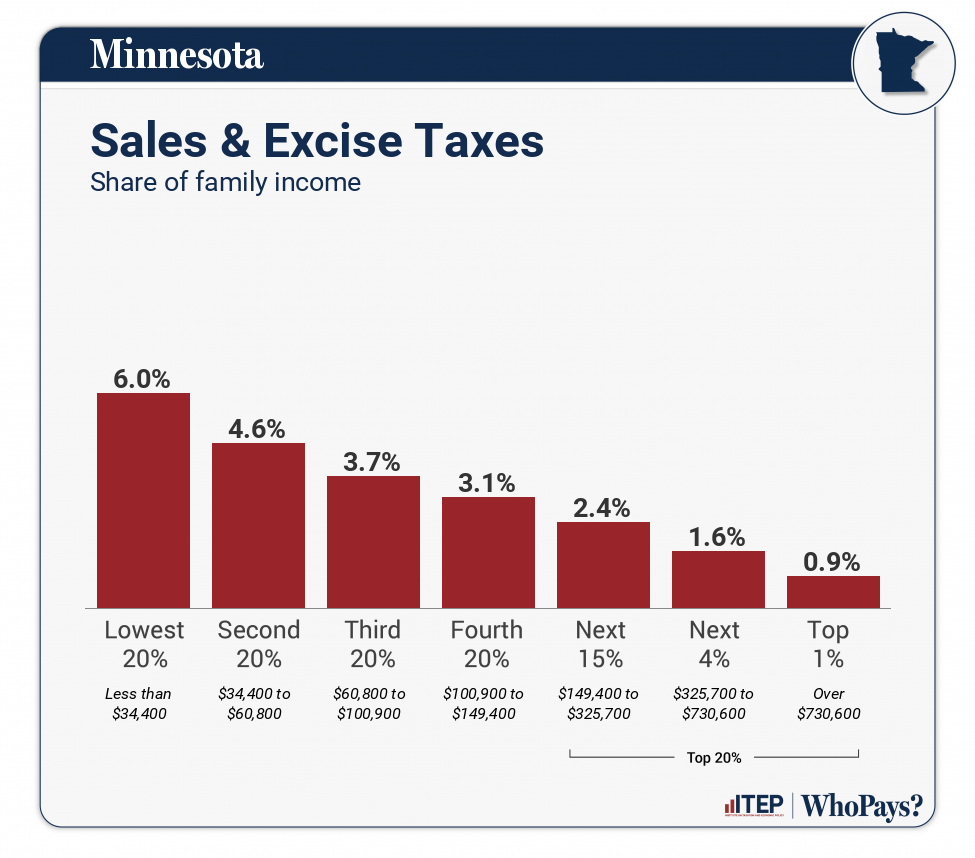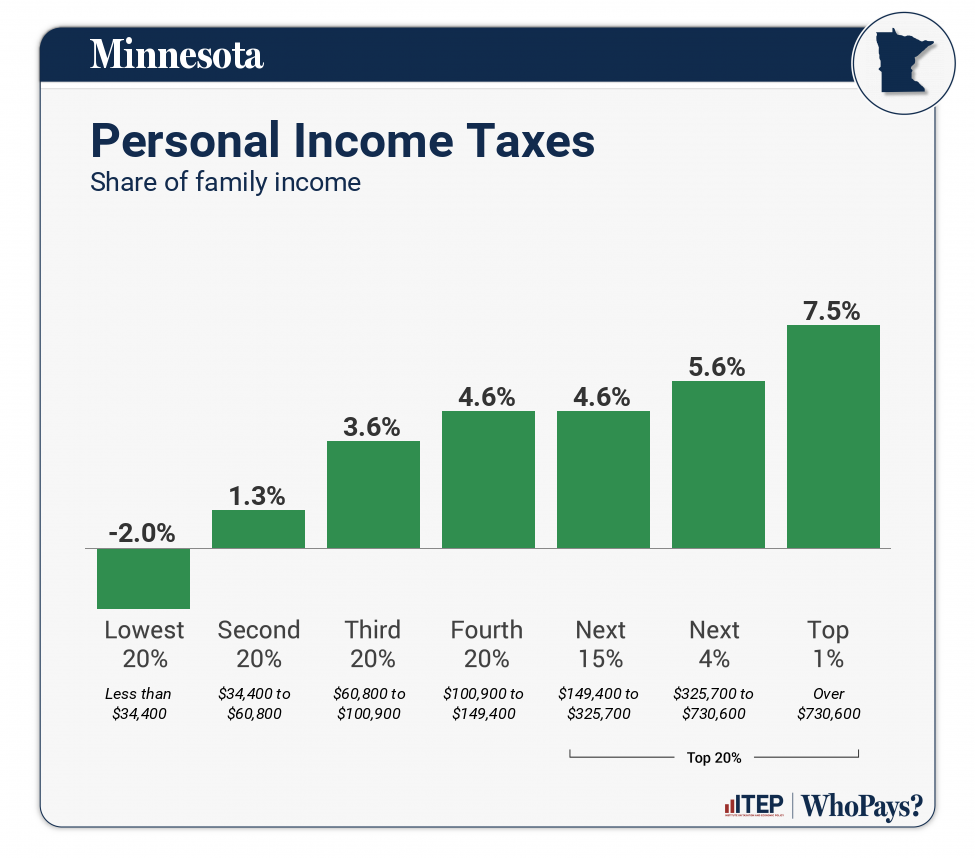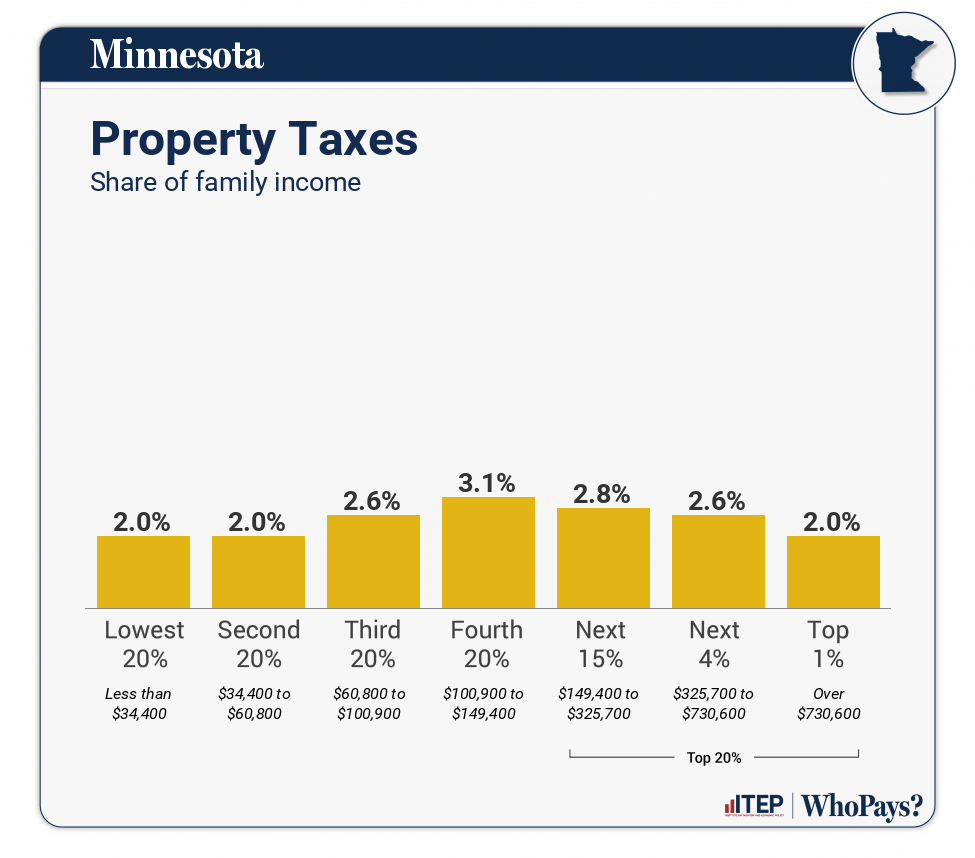Minnesota: Who Pays? 7th Edition

Minnesota
Download PDF
All figures and charts show 2024 tax law in Minnesota, presented at 2023 income levels. Senior taxpayers are excluded for reasons detailed in the methodology. Our analysis includes nearly all (99.9 percent) state and local tax revenue collected in Minnesota. As seen in Appendix D, recent tax policy changes have added to the progressivity of Minnesota’s tax system. Overall tax rates on the top 1 percent rose by 0.4 percentage points because of these changes while tax rates for the bottom fifth fell by 2.6 percentage points. These changes caused the state to move 3 spots in the ITEP Inequality Index rankings, from 47th to 50th most regressive.
State and local tax shares of family income
| Top 20% | |||||||
| Income Group | Lowest 20% | Second 20% | Middle 20% | Fourth 20% | Next 15% | Next 4% | Top 1% |
| Income Range | Less than $34,400 | $34,400 to $60,800 | $60,800 to $100,900 | $100,900 to $149,400 | $149,400 to $325,700 | $325,700 to $730,600 | Over $730,600 |
| Average Income in Group | $19,000 | $46,900 | $79,900 | $126,700 | $205,700 | $445,000 | $1,501,300 |
| Sales & Excise Taxes | 6% | 4.6% | 3.7% | 3.1% | 2.4% | 1.6% | 0.9% |
| General Sales–Individuals | 2.6% | 2.4% | 2% | 1.7% | 1.3% | 0.8% | 0.3% |
| Other Sales & Excise–Ind | 2.3% | 1.2% | 0.8% | 0.6% | 0.4% | 0.2% | 0.1% |
| Sales & Excise–Business | 1.1% | 1% | 0.9% | 0.8% | 0.7% | 0.6% | 0.5% |
| Property Taxes | 2% | 2% | 2.6% | 3.1% | 2.8% | 2.6% | 2% |
| Home, Rent, Car–Individuals | 1.4% | 1.5% | 2.1% | 2.7% | 2.3% | 2% | 0.7% |
| Other Property Taxes | 0.6% | 0.5% | 0.5% | 0.4% | 0.5% | 0.6% | 1.3% |
| Income Taxes | -2% | 1.3% | 3.6% | 4.6% | 4.6% | 5.6% | 7.6% |
| Personal Income Taxes | -2% | 1.3% | 3.6% | 4.6% | 4.6% | 5.6% | 7.5% |
| Corporate Income Taxes | 0.1% | 0% | 0% | 0% | 0% | 0.1% | 0.1% |
| Other Taxes | 0.1% | 0.1% | 0.1% | 0.1% | 0.1% | 0.1% | 0.1% |
| TOTAL TAXES | 6.2% | 8% | 10% | 10.9% | 9.9% | 9.9% | 10.5% |
| Individual figures may not sum to totals due to rounding. | |||||||
ITEP Tax Inequality Index
Minnesota has a hybrid system that is progressive through some parts of the income distribution and regressive through other parts. On balance, the overall system tilts slightly progressive according to ITEP’s Tax Inequality Index because lower and moderate income families pay the lowest tax rates. High-earners, however, often pay lower rates than middle-income families. Minnesota ranks 50th on the Index and only the District of Columbia has a more progressive system. (See Appendix B for state-by-state rankings and the report methodology for additional detail.)
Tax features driving the data in Minnesota
|
Requires combined reporting for the corporate income tax; some foreign tax haven income is partially taxed through GILTI inclusion
Refundable property tax “circuit breaker” credit (all ages, includes renters)
Levies higher property tax rates on higher-value properties
Limits itemized deductions for upper-income taxpayers
Levies a tax on high-earner investment income
Graduated personal income tax structure
Refundable working families tax credit
Refundable dependent care tax credit
Refundable Child Tax Credit (CTC)
Sales tax base excludes groceries
Levies a state estate tax
|
|
|
Real estate transfer tax does not include higher rate on high-value sales
Offers itemized deductions
|




